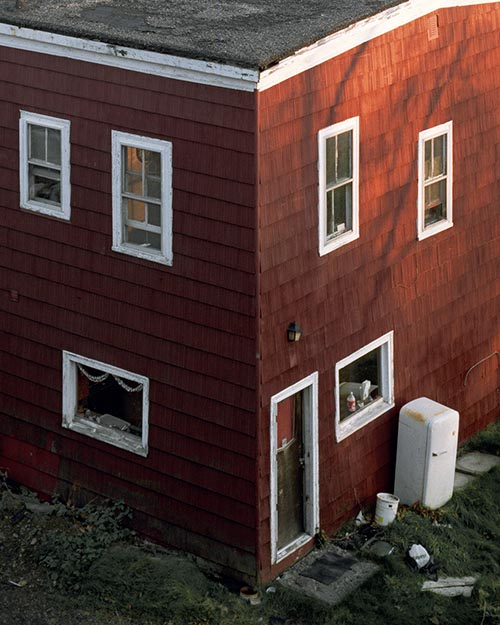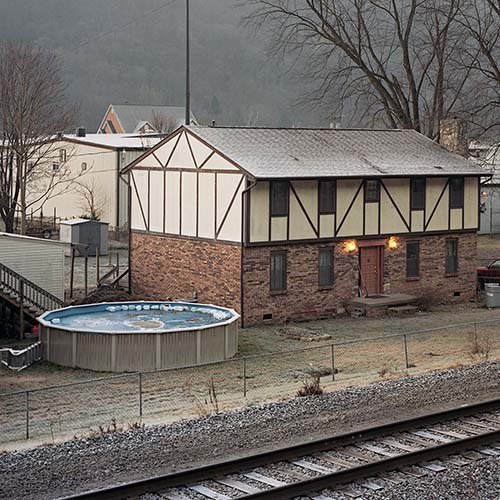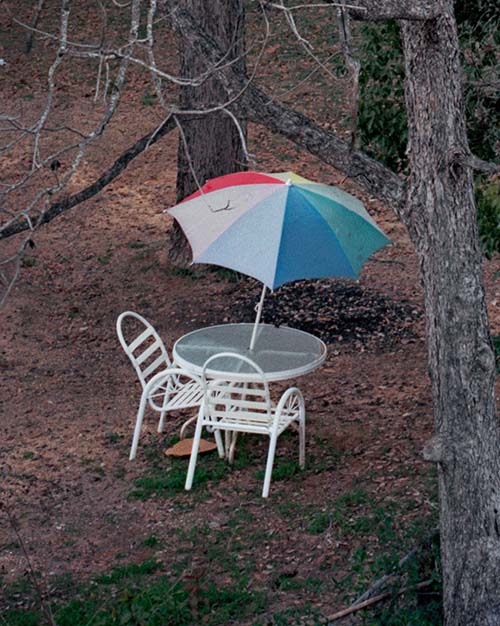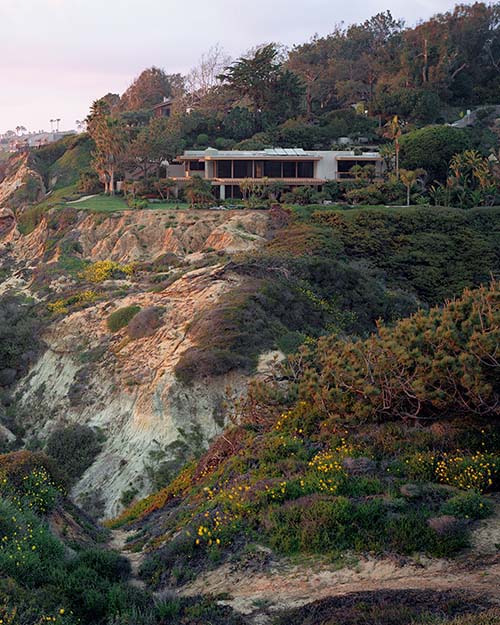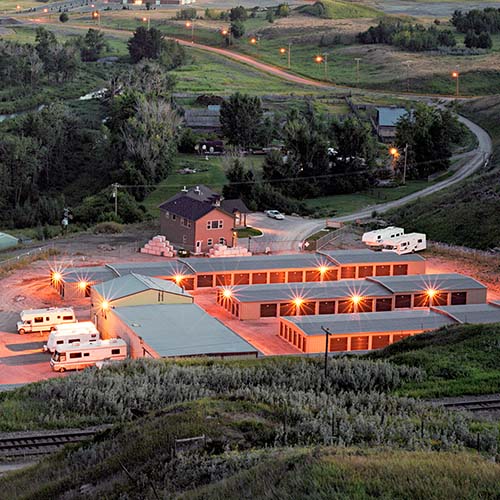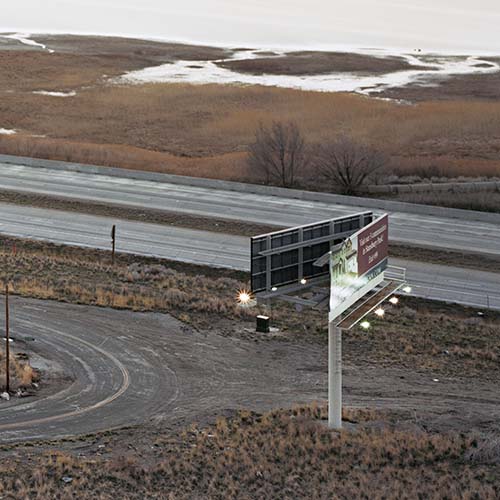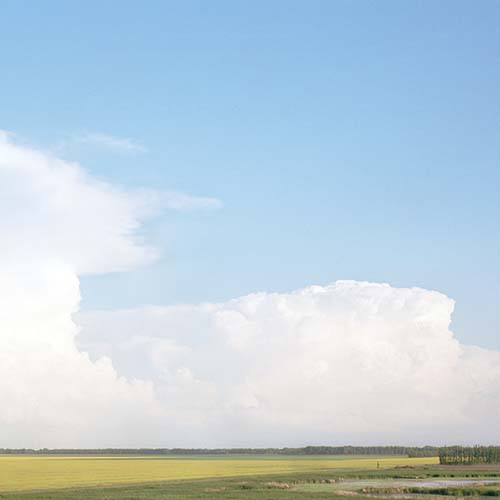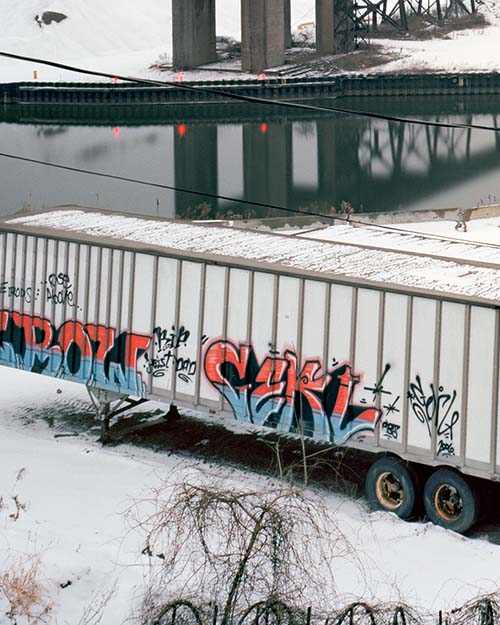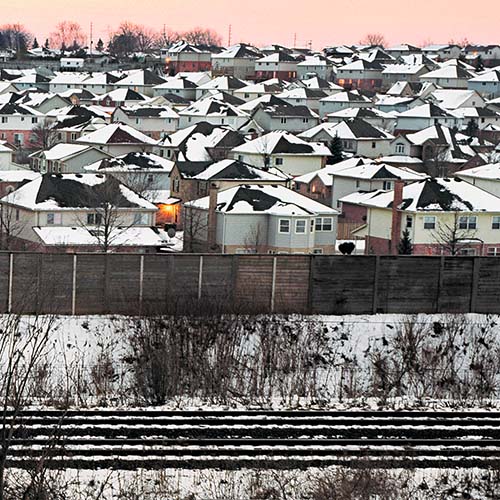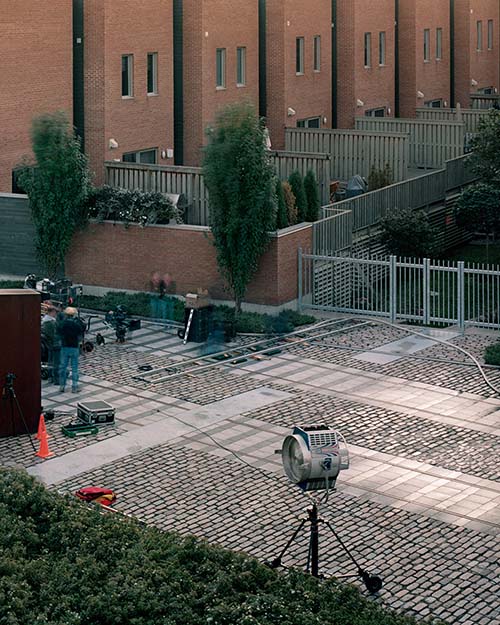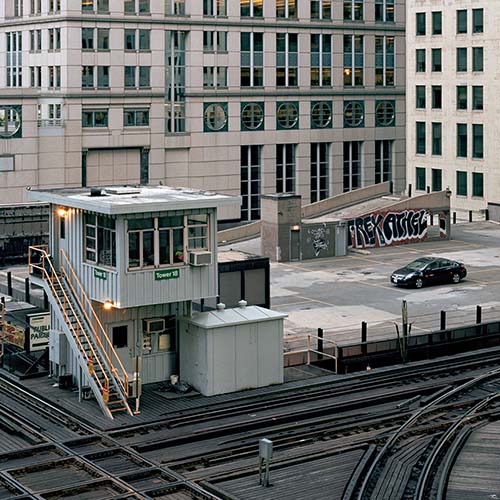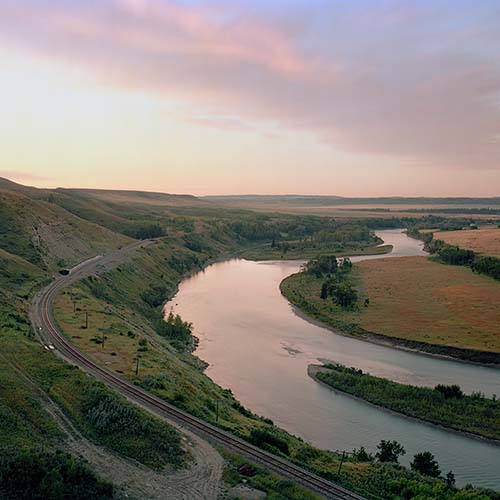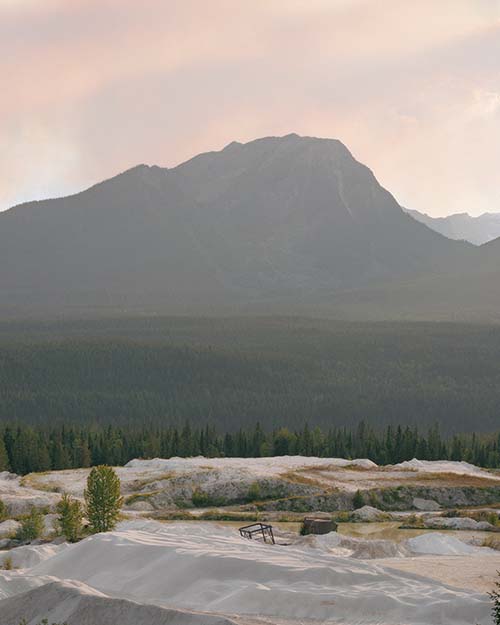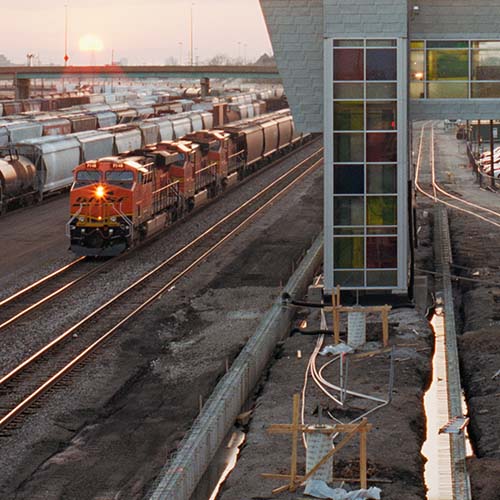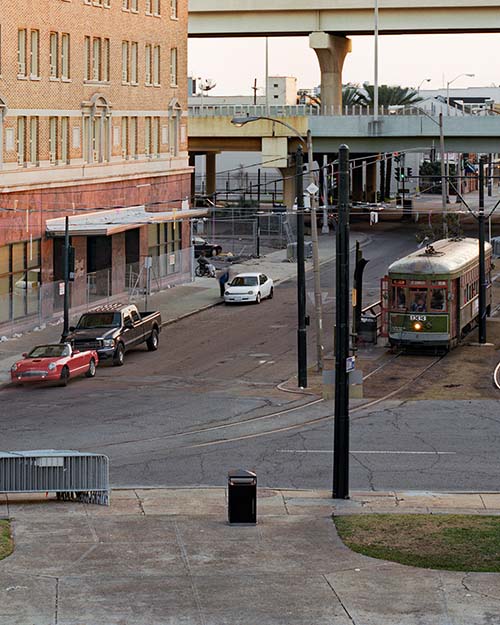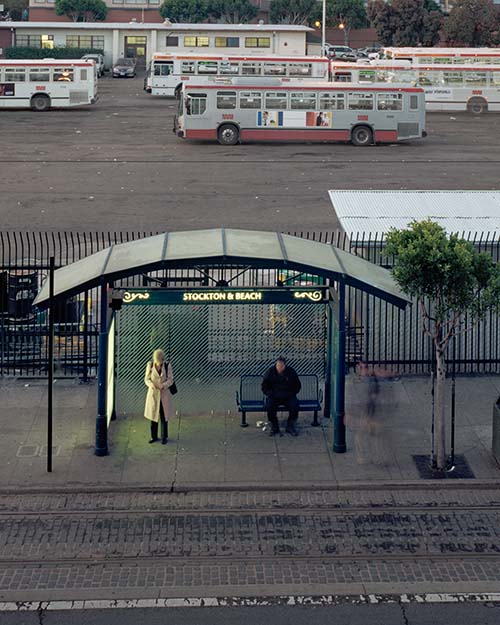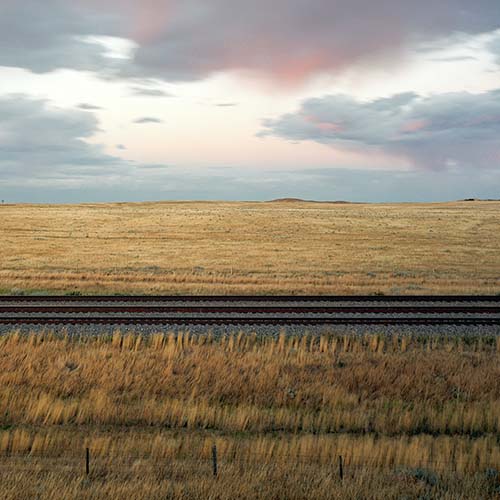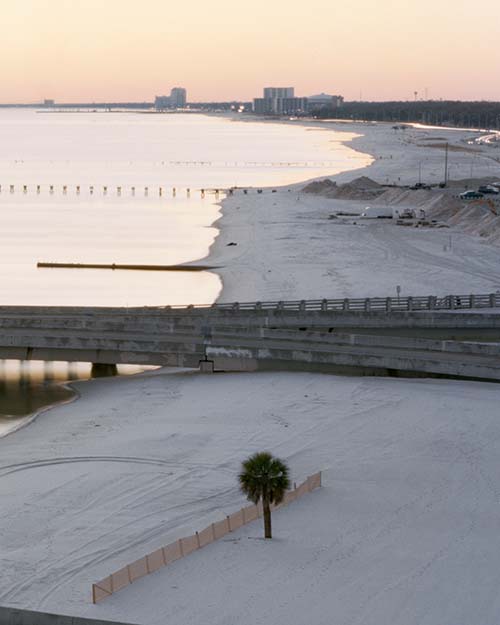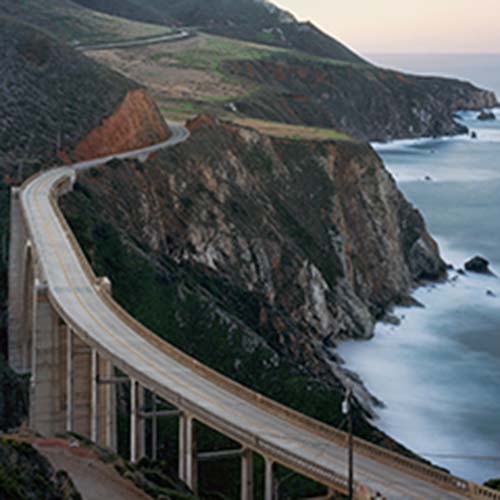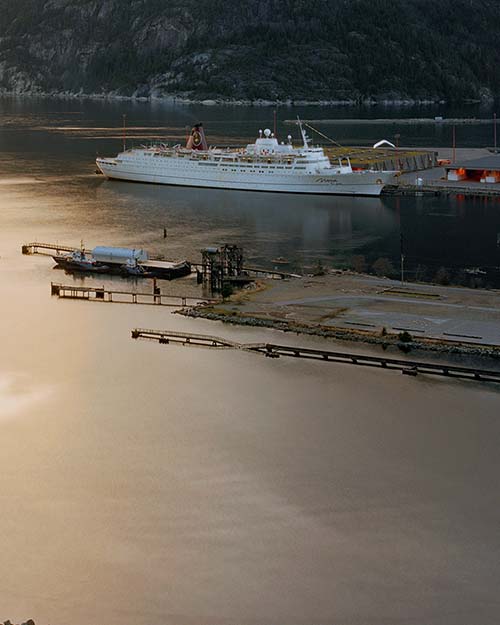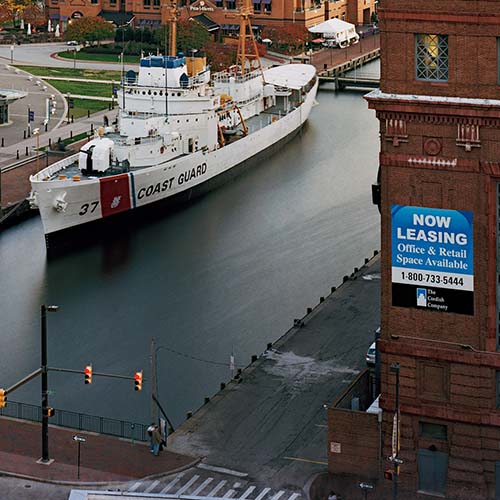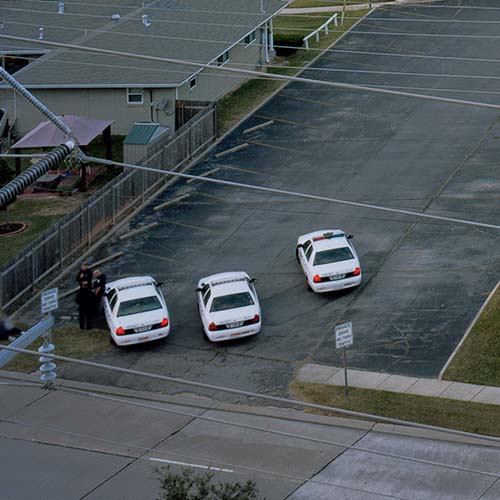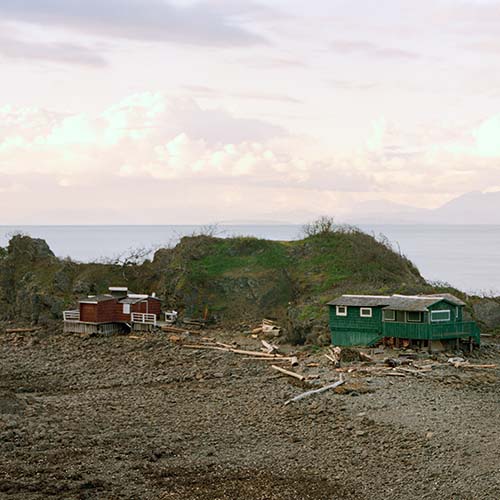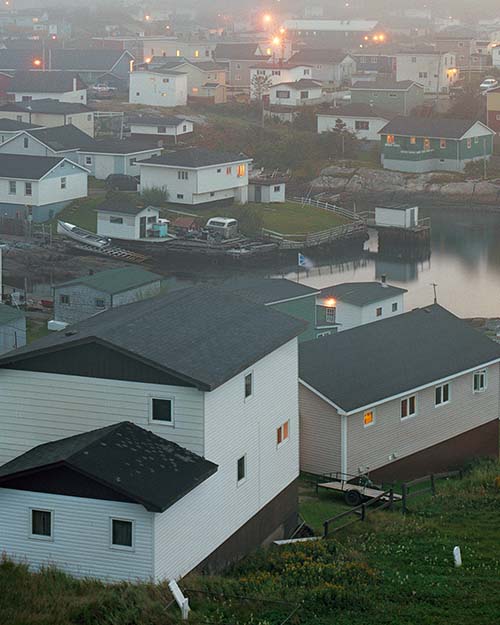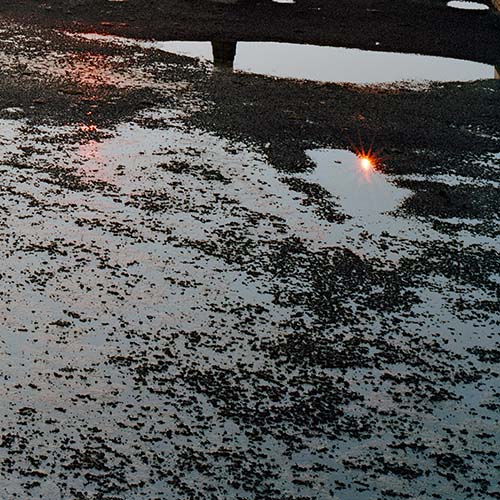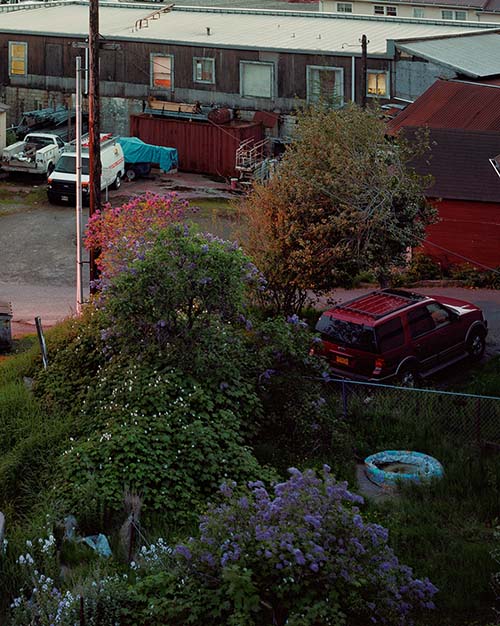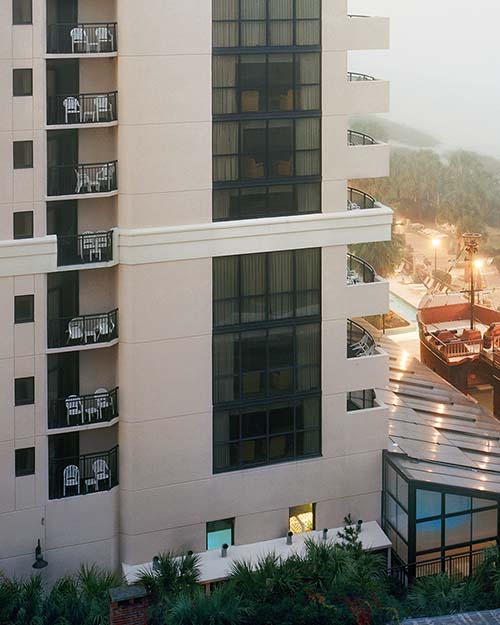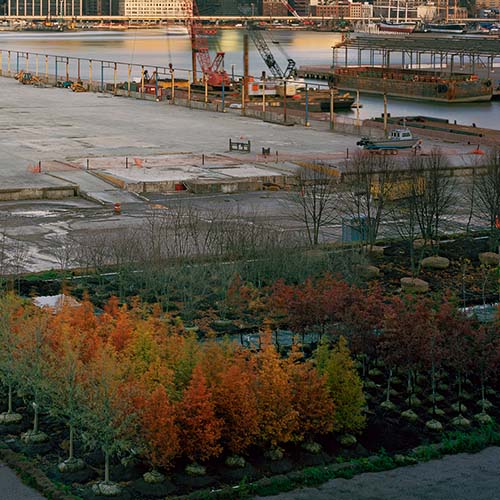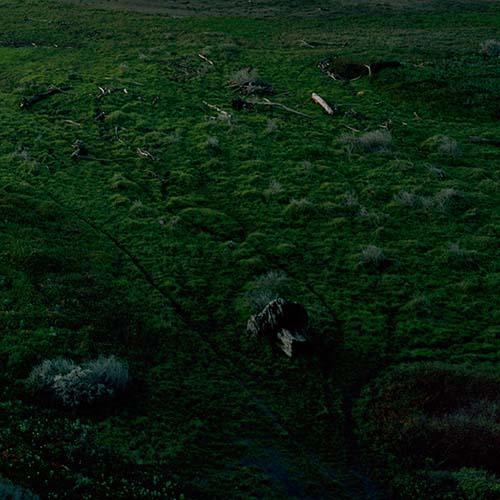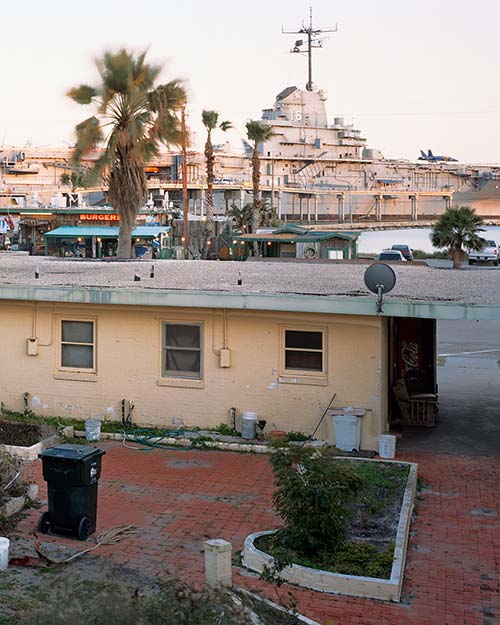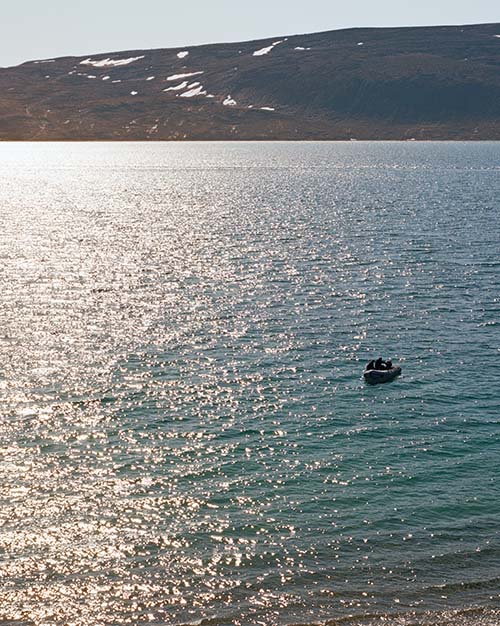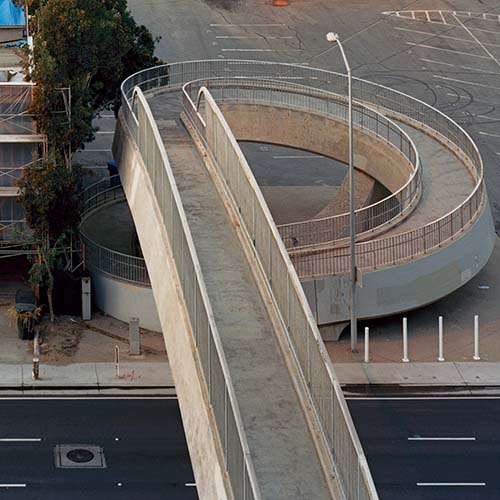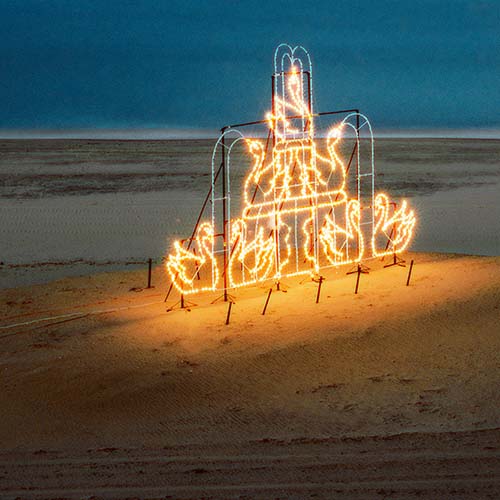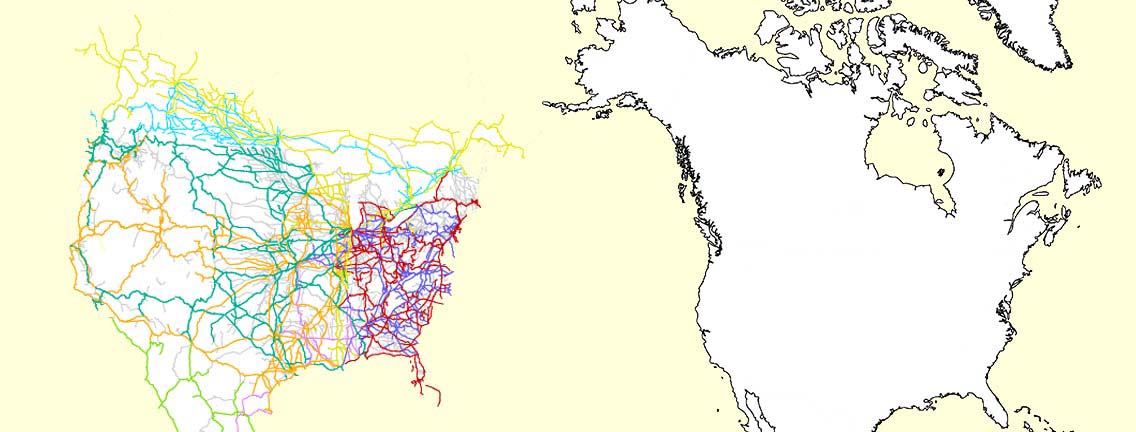BY Rail
BY SEA
Scott Conarroe is a traveller. His landscape photographs document the sites and composite relationships of the built environment, technology, human mobility and globalizing economic expansion. His projects By Rail and By Sea, completed in North America, revisit two of the most substantial developments of technology that continue to define modern history. The everyday word “by” has a vital role in the title of these projects. It denotes proximate location, habitation, authorship, oath, transport and agency. “By” also indicates the end of a time period (“… by the time the train arrives at the ferry terminal it will be dark”). In many respects, the use of this term is responsive to the redefinition of what landscape aesthetics could mean in contemporary photography and visual art.
Commenting of the writings of J.B. Jackson on vernacular landscape, Mark Dorrian and Gillian Rose note that Jackson’s landscape studies dispense with the optical paradigms associated with historical and aesthetic tropes of image creation, and reconsiders the representation of landscape as a synthetic infrastructure and cultural process that includes the sites where memory and identities are formed.
"On the one hand there is referral to the eye, whereby ‘Landscape’ is understood as the outcome of a pictorial, representational practice which ideologically stages its referent (nature, land, an estate, etc.) in relation to a viewing subject, thereby inculcating a ‘way of seeing’ that comes to extend beyond the immediate relations with the artwork itself. And on the other, there is ‘landscape’ as used in a more general way to describe the socio-cultural moulding on the physical environment by collectives and individual."
Although landscape, memory and identity can be consequences of displacement as well as belonging, these sites constitute, through collective memory and experience, a sense of place that includes “… the visual experience of our everyday world.”
The pictorial conventions that Conarroe adopts, the alluring colours that result from photographing at dusk and dawn, the elevated perspectival vantage point, the documentary veracity of realism associated with the optical aesthetics of the view camera are important to understanding why these photographs seem to describe what they cannot fully explain. Consequently, it is necessary to read these elaborate images through the inventory of available details as well as the populist anthropology that adheres to the sites. Conarroe is creating a visual time capsule that will eventually be reinterpreted, perhaps re-photographed, at a point in the future. In this respect, the ambiguous attributes that the images may convey rely on a discernible authenticity with respect to the conceptual intent of the projects. Challenging conventional perception, the static photograph is posited as a temporal object. Suggestive of the forensic aesthetics that Walter Benjamin recognized in the work of Eugene Atget and what Adrian Rifkin has referred to as a “… crafty misconception of place,” Conarroe illuminates these sites with visual familiarity and conceptual displacement. For Walter Benjamin, Atget “… looked for what was unremarked, forgotten, cast adrift,” and by evoking a maritime metaphor, his pictures could “… suck the aura out of reality like water from a sinking ship.” This analogy is applicable to the work of Scott Conarroe as well.
This visual serenity and chromatic splendour of Conarroe’s photographs in By Sea are both literal and misleading. We are invited to take pleasure in the ostensible beauty of the seaside, what Conarroe refers to as a “North American idyll,” from a safe and knowable distance. The everyday or average quality of these images is consistent throughout Conarroe’s quest. At the same time, the subject of the photographs is prescient of a future that is already influenced by a contemporary anxiety of loss (nostalgia) and the anticipation of ruin (catastrophe). In one respect, the images iterate the qualities of phatic discussions about the weather at the same time that they signal a critical dialogue that has transformed small talk about the weather into a matter of concern: “Cold enough for you?” The projects By Rail and By Sea establish the average or commonplace site as the paradoxical location for impending danger. Frequent rail catastrophes and dramatic natural disasters that are associated with climate change fill the media with foreboding and warning about technology and the environment.
News
